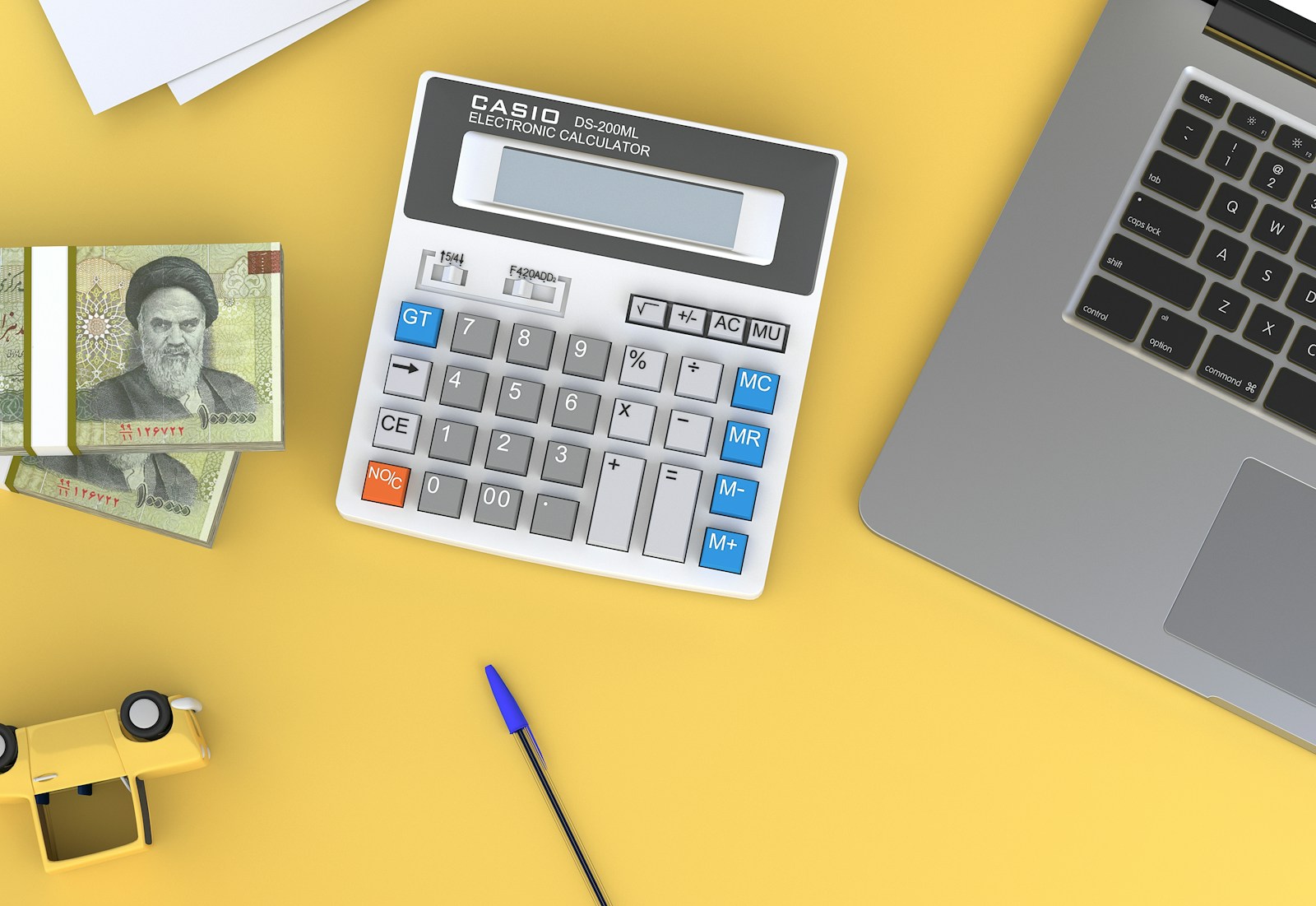The Ultimate Guide to Financial Planning for Side Hustlers

In today's economy, financial planning for side hustles is essential. Side gigs are increasingly popular for earning extra income and pursuing passions beyond traditional jobs. Balancing a side hustle with full-time work presents challenges, especially in managing finances. This ultimate guide equips side hustlers with vital tools and strategies for effective financial planning. It aims to help achieve financial goals and maintain a healthy work-life balance. Whether you're a freelancer, consultant, or running a small business on the side, this guide will equip you with the confidence and skills needed to navigate the financial aspects of your side hustle effectively and achieve success.
The Importance of Financial Planning for Side Hustlers
Understanding Your Income Streams
When managing a side hustle, it's crucial to have a clear understanding of your various income streams. Whether you're freelancing, consulting, or operating a small business on the side, it's essential to track and categorize your earnings. This can include income from client projects, product sales, affiliate marketing, or any other sources. It's important to create a system to monitor and manage these income streams effectively. By categorizing and analyzing your income sources, you can gain valuable insights into which aspects of your side hustle are most profitable, allowing you to make informed decisions about your business and financial planning.
Budgeting and Cash Flow Management
One of the key challenges for side hustlers is managing cash flow while juggling multiple income sources. Creating a comprehensive budget that accounts for both your personal and side hustle expenses is essential. By tracking your expenses and income, you can gain a clear picture of your financial situation, identify areas for cost-saving, and plan for future investments or expansion. Additionally, setting up a separate business account for your side hustle can help you maintain clear separation between personal and business finances. This not only simplifies tax filing and accounting but also provides a clear overview of your business's financial performance.
Tax Planning and Compliance
Effective tax planning plays a pivotal role in the financial strategy of side hustlers. It involves comprehending your tax responsibilities and implementing measures to mitigate tax burdens, crucial for sustaining your side hustle's financial well-being. Maintaining meticulous organization and record-keeping of financial documents like receipts and invoices is imperative to comply with tax laws. Seeking guidance from tax professionals offers valuable insights into tax-saving avenues and ensures adherence to regulations. By remaining proactive and well-informed about tax matters, you can mitigate financial risks, optimize tax positions, and bolster the success of your side hustle.
Overall, effective financial planning is essential for side hustlers to achieve their financial goals and maintain a healthy work-life balance. By understanding and managing income streams, budgeting effectively, and staying compliant with tax regulations, side hustlers can navigate the financial aspects of their ventures with confidence and success.

Understanding Your Current Financial Situation
Before delving into financial planning for your side hustle, it's crucial to have a clear understanding of your current financial situation. Start by evaluating your personal and business finances separately. Develop an exhaustive catalog of your assets, liabilities, and revenue streams encompassing both your primary employment and side venture. This meticulous record offers a panoramic snapshot of your financial status, facilitating the establishment of attainable objectives for your sideline endeavor.
To effectively assess your financial situation, consider creating a simple table or spreadsheet to organize your assets, such as savings, investments, and property, as well as your liabilities, including loans, credit card debt, and mortgages. Additionally, list all income sources from your full-time job and side hustle, including any passive income streams. This visual representation can help you identify areas for improvement or growth and form the foundation for developing a solid financial plan. By gaining clarity on your current financial status, you'll be better equipped to make informed decisions and set achievable financial targets for your side hustle.
Assessing your income and expenses
When it comes to assessing your income and expenses, it's essential to gather detailed insights into the financial dynamics of your side hustle. Start by separating your personal and business expenses, as this allows for a clear understanding of the cash flow and helps in making informed decisions about financial allocation. Use tools like accounting software or spreadsheets to track your income and expenses, ensuring that you categorize each transaction accurately.
Additionally, consider creating a monthly budget that outlines your projected income and expenses. This budget should cover both personal and business finances, providing a clear overview of your financial commitments and allowing you to plan for any potential fluctuations in income or unexpected expenses. By having a detailed understanding of your income and expenses, you can proactively manage your finances and make strategic decisions to support the growth and stability of your side hustle.
Here's an example of how you can organize your income and expenses in a simple table:
| Monthly Income | Monthly Expenses | |
|---|---|---|
| Full-time Job | $3,500 | $2,000 |
| Side Hustle | $1,200 | $500 |
| Total | $4,700 | $2,500 |
By visually representing your income and expenses in a table, you can easily identify your net income, analyze your spending patterns, and make necessary adjustments to optimize your financial resources. This structured approach to assessing your income and expenses lays a strong foundation for effective financial planning and management of your side hustle.
Identifying Financial Goals
After gaining clarity about your present financial state, the subsequent phase entails pinpointing precise financial targets for your side venture. These objectives have to be SMART: specific, measurable, achievable, relevant, and time-bound. Begin by contemplating your aspirations for the sideline endeavor. Are you aiming to augment your monthly earnings, save for a particular acquisition, or eventually transition to full-time entrepreneurship? Setting tangible financial goals enables you to chart a course for your financial planning and choices.
Deliberate on segmenting your financial aspirations into short-term, medium-term, and long-term targets. Short-term endeavors might entail establishing an emergency fund, procuring necessary equipment, or meeting particular business outlays. Medium-term goals could involve expanding your client base, increasing your profit margin, or launching a new product or service. Long-term goals might encompass achieving a certain level of sustainable income, transitioning to full-time entrepreneurship, or reaching a specific financial milestone. By delineating your goals across these timelines, you can create a cohesive financial plan that aligns with your aspirations and drives the growth of your side hustle.
By visualizing your financial goals, you can create a game plan to meet them. Use a table or chart to outline your short-term, medium-term, and long-term financial objectives, along with the steps required to achieve them. This approach helps you keep track of your progress and make adjustments as necessary to stay on course towards your financial goals. Please remember to regularly review and reassess your financial goals as your side hustle evolves, making sure that your financial planning remains aligned with your aspirations and changing business dynamics.
Tracking Side Hustle Income
Tracking your side hustle income is a fundamental aspect of effective financial planning. To accurately monitor your earnings, consider implementing a structured system that records all income sources and transactions. This can include using accounting software, creating spreadsheets, or utilizing dedicated banking tools to categorize and track your side hustle income. Additionally, establishing a regular schedule for reviewing and updating your income records can help you stay organized and informed about your financial performance.
Moreover, consider creating an income tracking table that outlines your various income streams, sources, and amounts. This table serves as a visual representation of your side hustle income, allowing you to identify trends, peak earning periods, and areas of growth. Regularly monitoring your side hustle's revenue empowers you to make astute financial choices, spot growth prospects, and maintain proximity to your financial objectives. This methodical income tracking fosters clarity and openness, pivotal for proficiently managing and planning the financial trajectory of your side venture.
Creating a Budget for Personal and Side Hustle Finances
When it comes to financial planning for side hustlers, creating a comprehensive budget that encompasses both personal and business finances is paramount. Crafting a meticulously organized budget enables you to distribute resources effectively, anticipate expenditures, and monitor your financial advancement. Initiate by segregating your expenses into fixed and variable outlays. Fixed expenses typically include recurring bills such as rent/mortgage, utilities, and loan payments, whereas variable expenses encompass discretionary spending like entertainment, dining out, and non-essential purchases.
By clearly defining and categorizing your expenses, you can prioritize your financial commitments and identify areas where cost-saving measures can be implemented. This simplified budgeting strategy enables you to retain command over your finances while guaranteeing comprehensive coverage of both personal and side hustle expenditures.
Utilizing budgeting tools and templates can streamline financial planning efforts. Many online platforms offer free resources enabling you to input income and expenses, visualize financial data, and monitor spending habits. These tools provide insights into financial behavior, highlight areas for improvement, and aid adherence to budgets. Regularly reviewing and adjusting budgets according to changes in income or expenses is crucial for maintaining financial stability.
By consistently evaluating budgets, individuals can adapt to evolving circumstances, stay aligned with financial goals, and ensure side hustle sustainability. Creating a comprehensive budget integrating personal and side hustle finances is foundational for effective financial planning, optimizing resources, and attaining financial objectives.
Financial Planning for Irregular Income
Side hustles often come with irregular income patterns, making it essential to develop a comprehensive plan for managing fluctuating cash flow. Start by analyzing your historical income data to identify seasonal trends or periods of peak earnings. This analysis can help you anticipate and prepare for leaner months, ensuring that you have adequate financial reserves to cover essential expenses during slower periods. Moreover, consider diversifying your income streams or offering retainer-based services to create a more predictable revenue stream, smoothing out income fluctuations and providing greater financial stability.
A proactive tactic for handling fluctuating income involves creating a dedicated savings account exclusively for side hustle earnings. Setting aside a portion of your profits during peak periods builds a financial safety net for leaner times. This forward-thinking cash flow strategy reduces the anxiety associated with irregular income, granting peace of mind to concentrate on nurturing and expanding your sideline venture. Moreover, devising a well-defined budget accommodating variable income allows for preparation for periodic expenses like equipment upgrades or marketing endeavors, ensuring the financial robustness of your side hustle amid income fluctuations.
The Importance of Emergency Funds for Side Hustlers
Establishing and upholding an emergency fund is essential for side hustlers. The unpredictable nature of side hustle income underscores the need for a financial safety net to mitigate unexpected expenses or earnings dips. Whether it's equipment breakdowns, delayed payments, or personal emergencies, having accessible funds safeguards your business and personal finances. By setting aside a portion of your side hustle income into an emergency fund, you create a buffer that preserves financial stability amidst unforeseen circumstances. This proactive approach not only cushions against unexpected events but also strengthens the financial resilience of your side hustle, enabling focus on growth and long-term success.
Directing a portion of your side hustle earnings into a separate savings account is an effective method to build an emergency fund. Aim to accumulate three to six months' worth of living expenses, covering both personal and business costs. Regularly monitoring your emergency fund balance and adjusting savings goals ensures readiness for financial uncertainties. Prioritizing the establishment of an emergency fund enhances financial security, reduces stress from financial shocks, and sustains side hustle momentum during challenging times.
Side Hustle Ideas for Extra Income
- Freelance Writing or Editing
- Graphic Design or Web Development
- Tutoring or Teaching
- Pet Sitting or Dog Walking
- Renting out a Room or Property
- Photography or Videography Services
- Virtual Assistant or Administrative Support
- Event Planning or Party Services
- Personal Training or Fitness Coaching
- Selling Handmade Crafts or Products
- Food Delivery or Meal Prep Services
- Social Media Management or Influencer Marketing
- Consulting or Coaching in a Specific Field
- Car Washing or Detailing Services
- Lawn Care or Landscaping Services
These side hustles can provide individuals with the opportunity to earn extra income outside of their regular job, helping them boost their savings rate and work towards financial independence.

Financial Planning: Maximizing Your Side Hustle Income
In today's gig economy, side hustles have become a popular avenue for earning supplementary income, whether it's for financial goals like retirement savings, debt repayment, or simply boosting cash flow. However, to truly harness the potential of your side hustle, effective financial planning is essential.
A critical component of financial planning for side hustles revolves around understanding tax implications. Neglecting quarterly tax payments is a common pitfall for first-time business owners, potentially leading to significant tax liabilities down the road. Collaborating with a certified public accountant (CPA) ensures compliance with tax deadlines and may offer strategies to optimize deductions, especially if your side hustle income pushes you into a higher tax bracket. Additionally, considering contributions to tax-deferred retirement accounts can mitigate tax burdens while enhancing long-term financial security.
Separating personal and business expenses is paramount for financial clarity and legal safeguards. By maintaining separate financial records and utilizing dedicated business checking accounts, side hustlers can streamline financial management and prepare for future expenses and taxes. Effective marketing strategies, including social media engagement and targeted online campaigns, play a crucial role in maximizing side hustle income.
Additionally, creating a realistic budget and employing savings techniques like automated savings plans and budgeting apps bolster financial stability amidst economic fluctuations. Through diligent financial planning, collaboration with professionals, and strategic decision-making, side hustlers can optimize income potential and ensure long-term financial security.
Tax Considerations for Side Hustlers
As a side hustler, understanding the tax implications of your additional income is essential for effective financial planning. Here are some key tax considerations to keep in mind:
- Self-Employment Taxes: If your side hustle income exceeds a certain threshold, you may be required to pay self-employment taxes. It's important to set aside a portion of your earnings to cover these taxes and avoid any surprises come tax season.
- Estimated Quarterly Taxes: Unlike traditional employees, side hustlers are typically responsible for making estimated quarterly tax payments. Working with a tax professional can help you calculate and plan for these payments, ensuring that you remain compliant with tax regulations.
- Deductions and Credits: Take advantage of tax deductions and credits available to small business owners and independent contractors. This can include deductions for business expenses, home office deductions, and retirement account contributions.
- Record-keeping: Maintaining accurate records of your income and expenses is crucial for tax purposes. Using accounting software or spreadsheets can help you track and categorize your financial data, making tax preparation more streamlined.
- Tax-Advantaged Retirement Accounts: Consider contributing to tax-deferred retirement accounts, such as a SEP IRA or Solo 401(k), to reduce your taxable income and plan for your retirement.
By understanding these tax considerations and working with a tax professional, you can effectively manage the tax aspects of your side hustle and optimize your financial planning.
Staying Compliant and Informed
Staying compliant with tax regulations and staying informed about financial matters is crucial for the success of your side hustle. Here are some strategies to ensure compliance and stay informed:
- Professional Advice: Consider partnering with a tax consultant or accountant who specializes in small business and self-employment taxes. They can provide valuable guidance on tax planning, compliance, and optimization of tax-saving opportunities.
- Continuous Education: Stay informed about changes in tax laws and regulations that may impact your side hustle. Attend relevant workshops and seminars, and keep up to date with industry publications to stay ahead of any tax-related developments.
- Organized Documentation: Keep all financial documents, including receipts, invoices, and tax forms, organized and readily accessible. This will streamline the tax preparation process and help you provide accurate information when filing your tax returns.
- Proactive Compliance: Proactively address any tax-related issues or concerns as they arise. Don't wait until tax season to address potential tax liabilities or compliance issues. By staying proactive, you can avoid last-minute stress and penalties.
By prioritizing compliance and staying informed about tax matters, you can protect the financial health of your side hustle and focus on its growth and sustainability.
Conclusion
Navigating the financial landscape of a side hustle poses challenges, yet with strategic financial planning, side hustlers can attain their financial objectives while maintaining equilibrium in their work-life dynamic. Understanding income sources, adhering to budgets, and ensuring tax compliance are crucial elements in fostering financial confidence and success for side hustlers.
By implementing practices such as diligent income tracking, comprehensive budgeting, preparing for irregular income, establishing emergency funds, and optimizing tax strategies, side hustlers can enhance their financial planning prowess and fortify their financial security. With these tools and methodologies at their disposal, side hustlers can thrive in today's economic landscape, leveraging their ingenuity and dedication to augment income streams and pursue entrepreneurial endeavors. Effective financial planning not only manages figures but also empowers side hustlers to attain financial stability, pursue passions, and craft a gratifying work-life harmony.
Gigs Money Tips
Financial Planning tips for Gig Economy Workers.




